4 Impulse Control Games for Dogs + Daily Training Exercises | Pupford
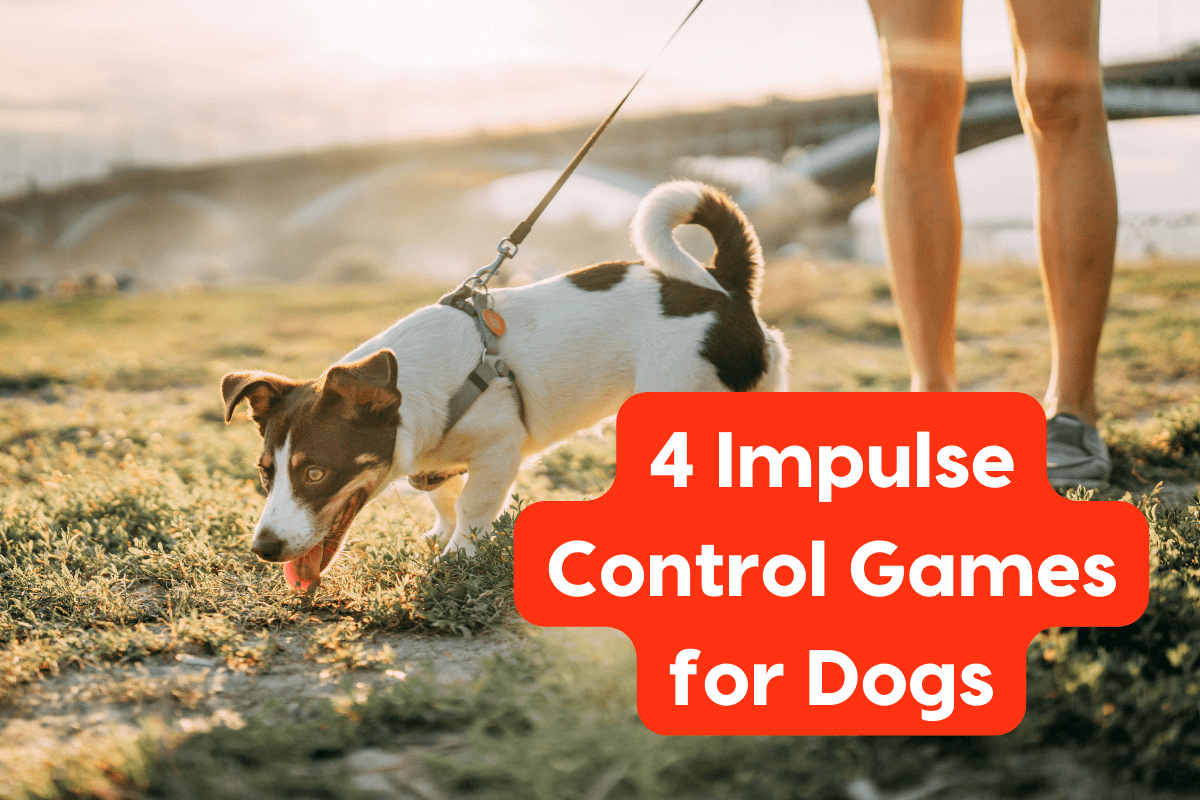
There’s a common misconception that dogs who chase, run across thresholds, or seemingly can’t control themselves around food are being defiant or trying to be the “alpha” of your home.
But that’s not really the case. What you’re seeing in those situations is impulse, rather than a personality trait.
Dogs have strong impulses by nature, with certain impulses being particularly strong in certain breeds – for example, terriers may be more likely to want to chase a squirrel than a pug, but that pug may have a harder time waiting patiently for their food.
Today we’re going to talk a little more about your dog’s impulses, signs you may need to work on impulse control with your dog, and some games and activities that can engage your dog while working on their impulse control!
LISTEN TO PODCAST ABOUT DOG IMPULSE CONTROL
Want to hear more podcasts like this? Please click here.
WATCH VIDEO
Want to see more videos like this? Please click here.
🐶 Don't miss out, get access to 21 easy-to-play & effective impulse control games. Get access to 21 Impulse Control Games now!
WHAT IS IMPULSE CONTROL?
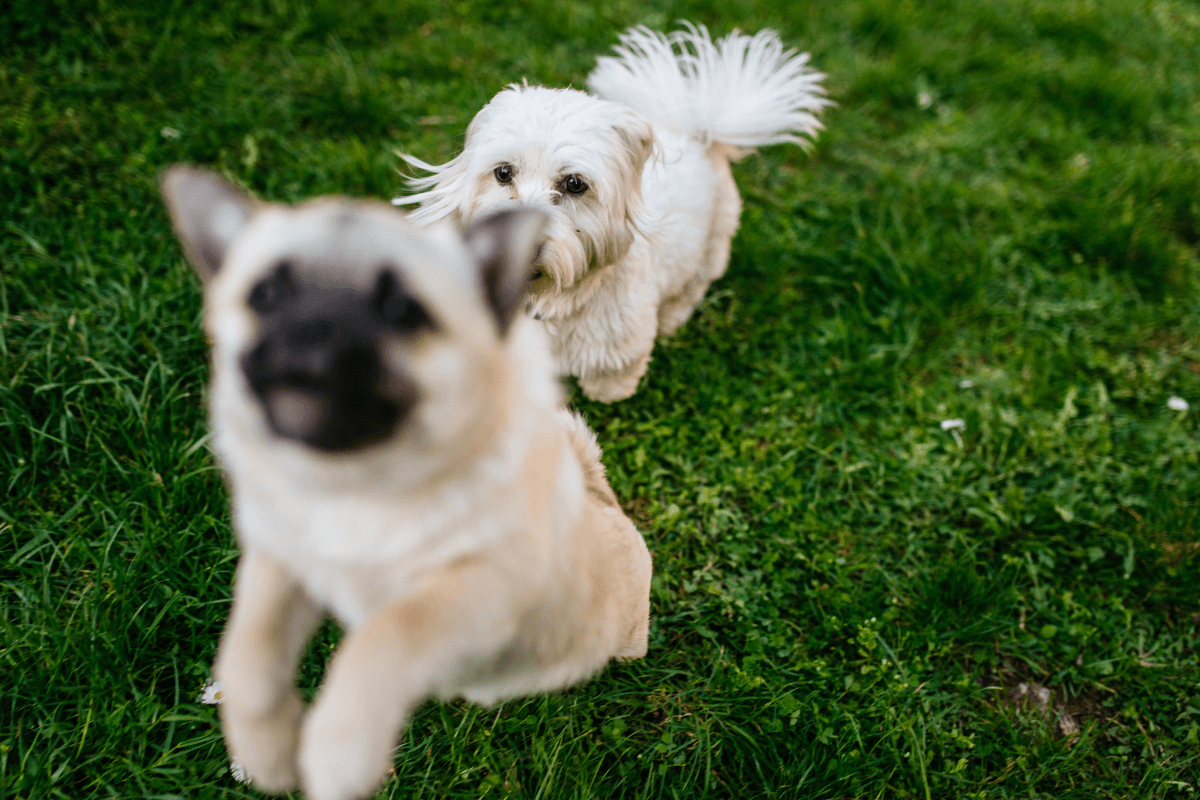
We talked a little in our introduction about what impulses are. But it’s important to be really clear about what we mean by impulse control.
There’s a common misconception that impulse control means working to eliminate impulses altogether. Not only is that not accurate, it’s not possible. Impulses are a natural part of how your dog’s brain is wired and attempting to go against that will just leave your dog frustrated – not to mention you as well.
Dogs' impulses are natural! So instead of viewing something like your dog bolting through a door or chasing after a squirrel as them trying to be the alpha, it should be viewed as a natural thing that is ingrained in dogs.
What we’re really trying to accomplish is helping your dog manage their impulses and explore them productively. We want them to know that if they have patience and don’t act on their impulses in certain situations, there will be positive outcomes.
And of course, we want to give our dogs plenty of opportunities to have fun with their impulses through additional games and activities that foster their chase, prey drive, and foraging impulses among others.
Now that we’re more clear on the goals of impulse control, we can get into signs that your dog needs some work in this area and how you can help them – in fun ways!
Related Reading: Why Do Dogs Bury Food, Treats & Toys?
SIGNS YOUR DOG NEEDS IMPULSE CONTROL TRAINING
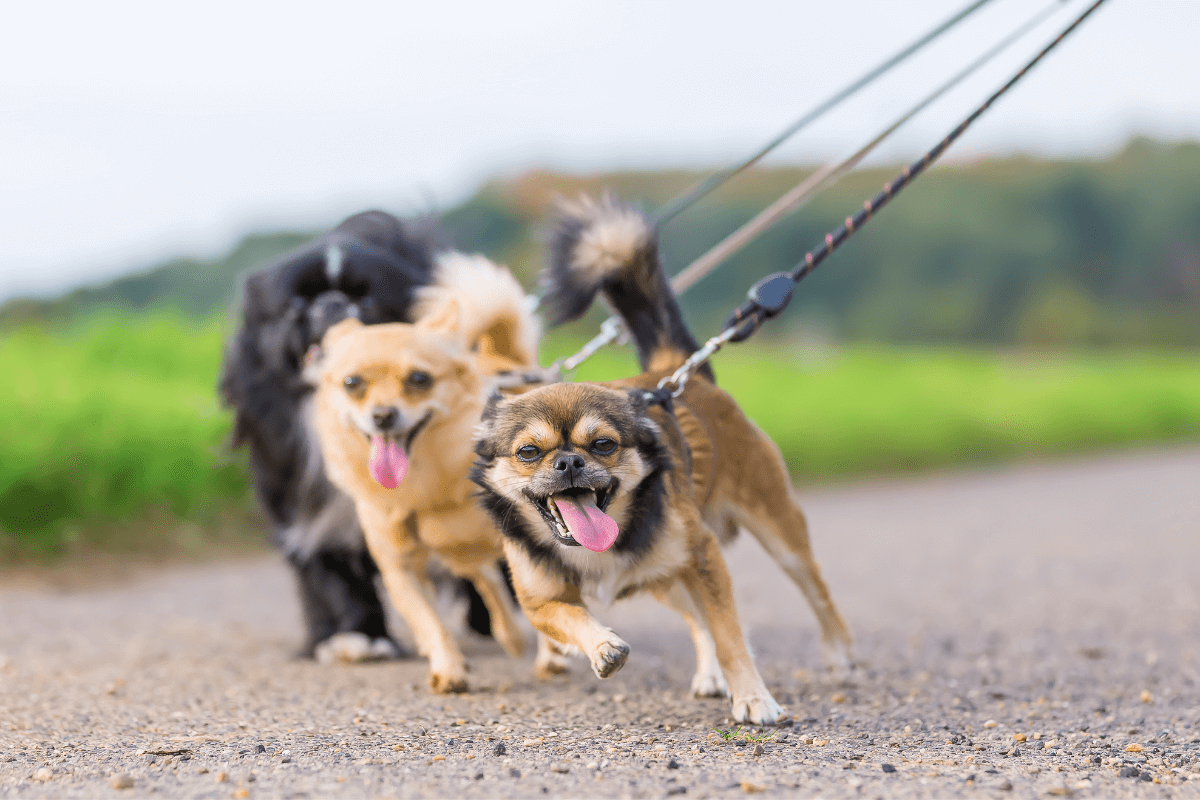
So how do you know when it’s time to bring some impulse control activities into your training?
Here are a few common behaviors that mean your dog may need a little help with their impulses:
- Running through doorways to get outside
- Rushing in and out of car doors
- Pulling on their leash during walks
- Chasing squirrels, cats, birds, and other animals
- Rushing to greet people and animals and/or jumping on them as a greeting
- General hyperness and inability to calm down
- Trying to take food out of your hand or eating before being told to
- Putting everything in their mouth
Keep in mind that there’s no bad time to work on impulse control. You don’t have to wait for your dog to exhibit any of these behaviors – in fact, it’s better to be proactive and get ahead of them.
Related Reading: How to Stop a Dog From Running Out the Front Door
🐶 Don't miss out, get access to 21 easy-to-play & effective impulse control games. Get access to 21 Impulse Control Games now!
4 IMPULSE CONTROL GAMES FOR YOUR DOG
The good news is that working on impulse control can be a lot of fun for both you and your dog. There are plenty of training games out there that help your dog channel their impulses using positive reinforcements.
Like any other type of training, you’ll want to be prepared with the right tools before you get started. Here’s what we recommend:
- High-value, low-calorie training treats
- A flirt pole
- Leads, both short and long
In some cases, you’ll also need a buddy to help out or some other specific tools. But those three staples will come in handy in many training scenarios.
Now let’s get into what you came here for – a few examples of impulse control games for your dog or puppy. 👇
1. SEE-SAW GAME
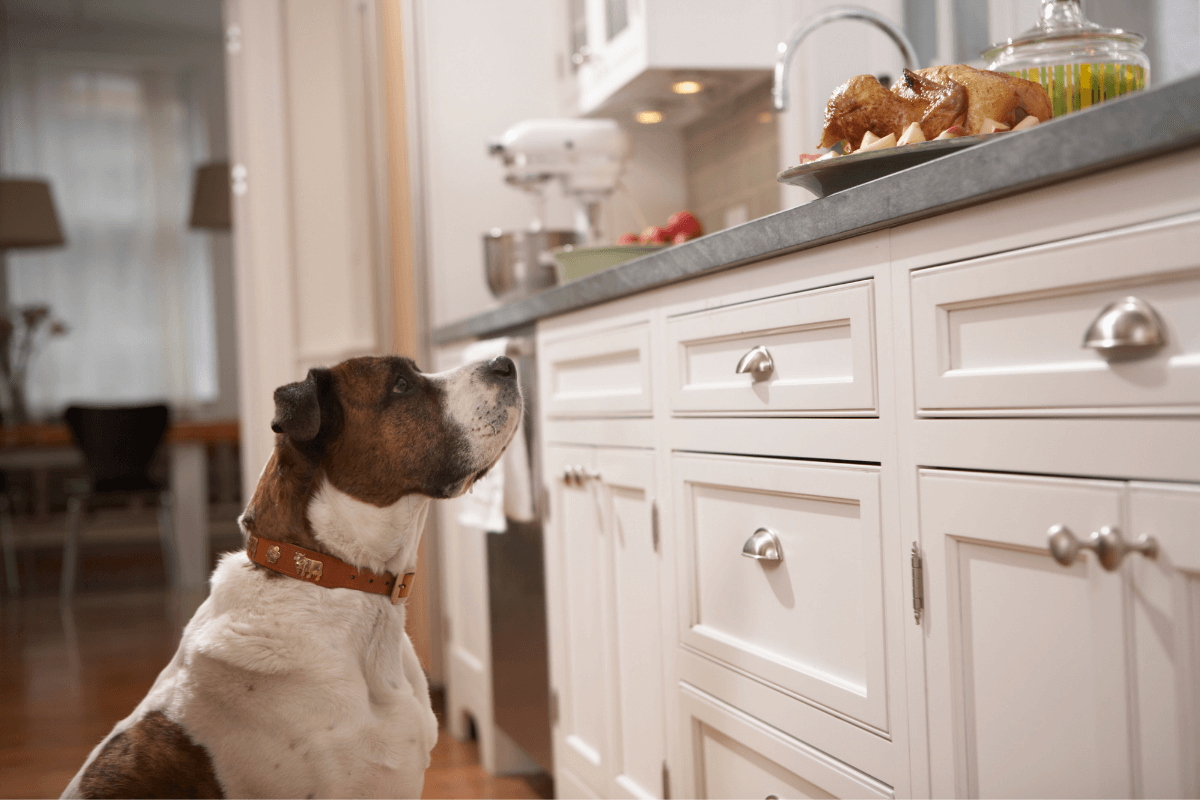
This game teaches your dog to not lunge for food or steal off-limits food. The goal of this game is to be able to gradually lower a plate of human food (be sure to use dog-safe food just in case!) all the way to the ground without your dog lunging towards it.
Sounds challenging, but if you work to make slow and steady progress, you’ll even be able to get your dog to maintain eye contact with you the whole time and completely ignore the plate!
You’ll need:
- Human food (dog safe in case they snatch it)
- Extra special rewards
To play:
- Kneel or stand above your dog with your food on a plate
- Start to lower the plate
- As you lower the plate, raise it immediately when (or if) your dog goes for it
- Repeat this until you can successfully lower the plate all the way to the floor
- Once that happens, mark and reward
- If needed, you can start by rewarding your dog when you are able to lower it ¼, ½, or ¾ the way to the floor
2. DARTING SQUIRREL GAME
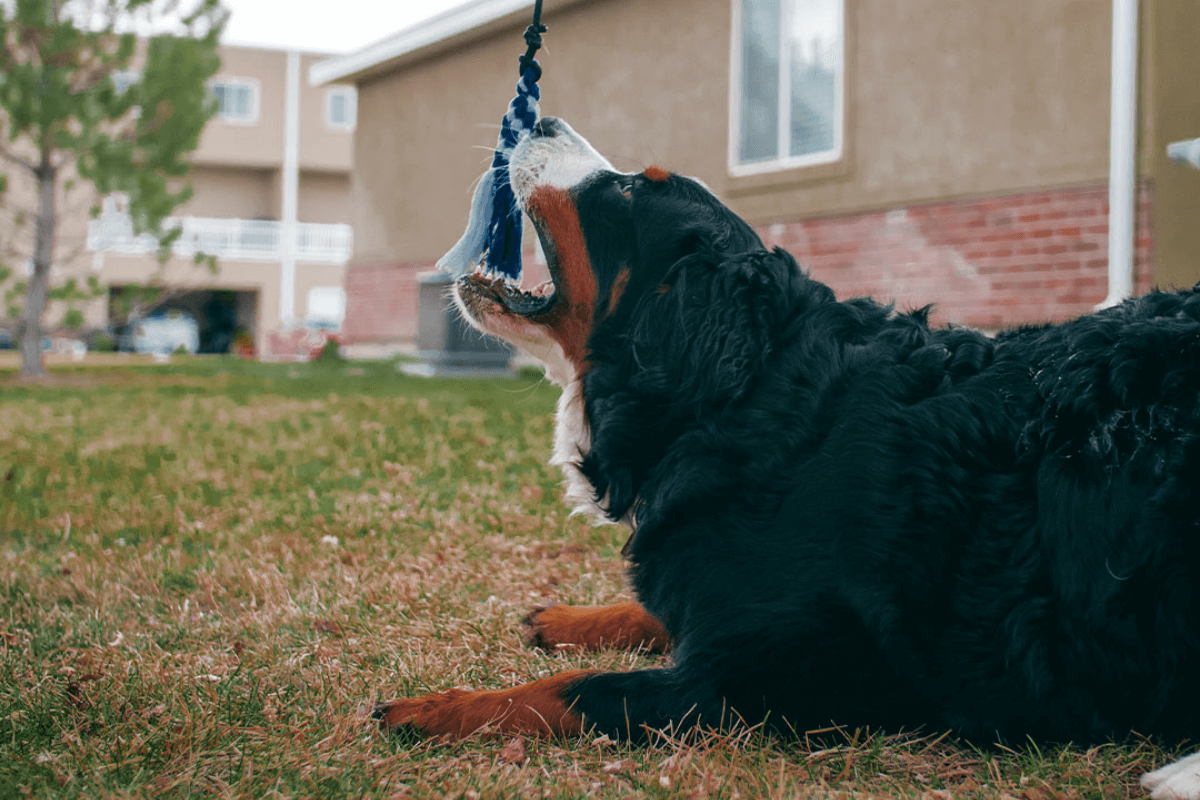
If you have issues with your dog chasing objects or animals, this game is for you.
Have your dog in an enclosed environment or on a long lead, and get your dog engaged with their flirt pole. The goal of this game is to be able to move the flirt pole out of your dog's reach, give them a cue, and have them completely stop chasing the flirt pole.
That way, if you are out and about and a squirrel runs by, you can give the “leave it” cue and trust that they won’t go after the squirrel.
You’ll need:
- You’ll need a flirt pole
- High-value training treats
To play:
- Start by getting your dog used to playing with a flirt pole by making it as exciting as possible
- Slowly move the flirt pole around. You’ll want your dog to be engaged and go after it
- Then stop moving it and move it out of your dog’s reach
- Wait for them to stop chasing/jumping
- The instant they show restraint, mark and reward
🐶 Don't miss out, get access to 21 easy-to-play & effective impulse control games. Get access to 21 Impulse Control Games now!
3. DOORBELL PLACE GAME
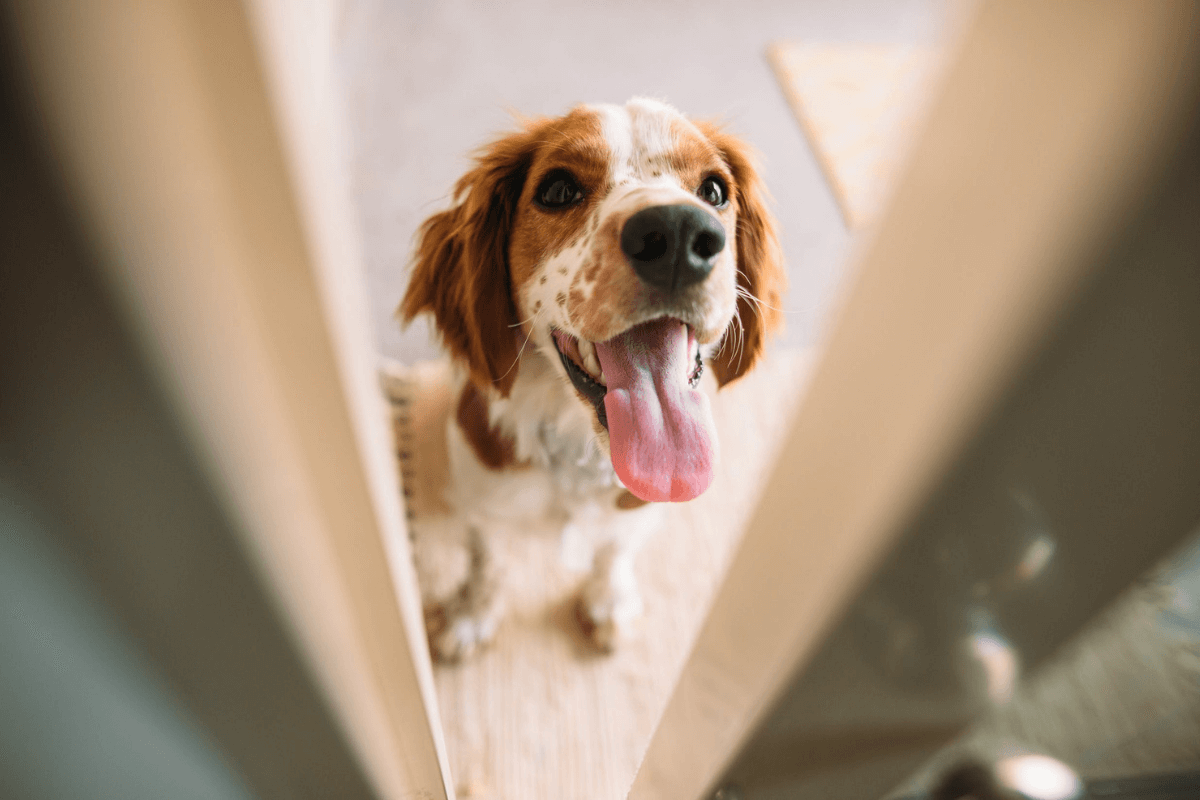
This game is for dogs who go bonkers when the doorbell rings or when someone knocks. It’s a game to gradually get your dog to stop barking when the doorbell rings and to sit patiently in a designated place until released.
You’ll start by marking and rewarding your dog when they stop barking, and eventually work to have them in their place and sitting or lying down before the door opens, without you having to even tell them.
You’ll need:
- A friend to knock on the door
- High-value treats
To play:
- Stand near the door and have someone knock or ring the doorbell
- Wait until your dog stops barking
- The instant they stop, mark and reward
- Depending on your dog, you may need to work on this frequently for a few days. The more you do it, the quicker they will stop barking
- Then introduce their place or bed
4. RED LIGHT GREEN LIGHT GAME
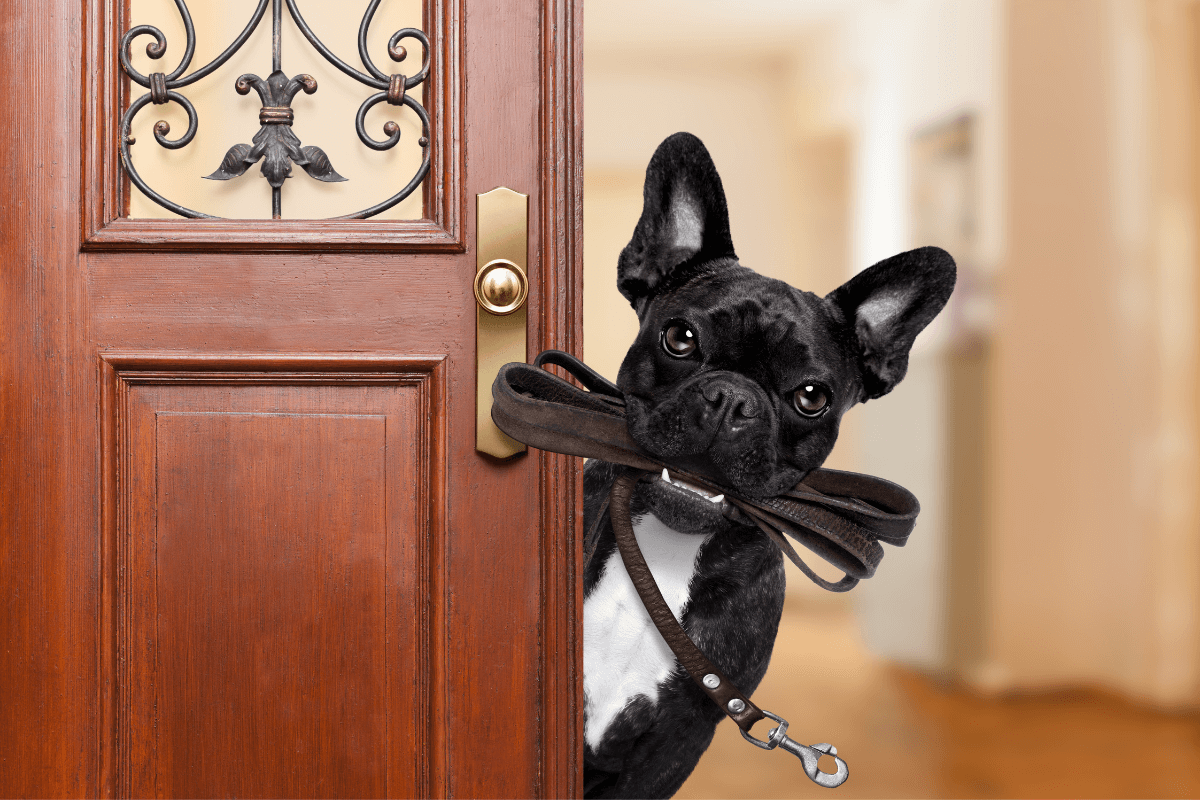
Leash reactive dogs, this one is for you.
Red light green light is a game that teaches your dog to move forward on the leash when you tell them to, not when they feel like it or see something worth chasing. Your dog will be more focused during walks and they will be rewarded by getting to walk with you – win-win!
You’ll need:
To play:
- Start inside with your dog on a leash
- While holding the leash, start walking forward
- As long as the leash is loose, keep walking
- When the leash gets tight, stop walking
- Wait until your dog comes to you or stops pulling then mark and reward
- Start walking again
- Repeat
Related Reading: Reactive Dog Training Games
DAILY IMPULSE CONTROL EXERCISES FOR DOGS & PUPPIES
While dedicated training and games are necessary for improving impulse control, you have opportunities in your everyday routine to practice as well!
Here are a couple of ways you can work on impulse control on a daily basis with your puppy or dog.
🐶 Don't miss out, get access to 21 easy-to-play & effective impulse control games. Get access to 21 Impulse Control Games now!
HAVE YOUR DOG WAIT TO GO THROUGH THE FRONT OR BACK DOOR
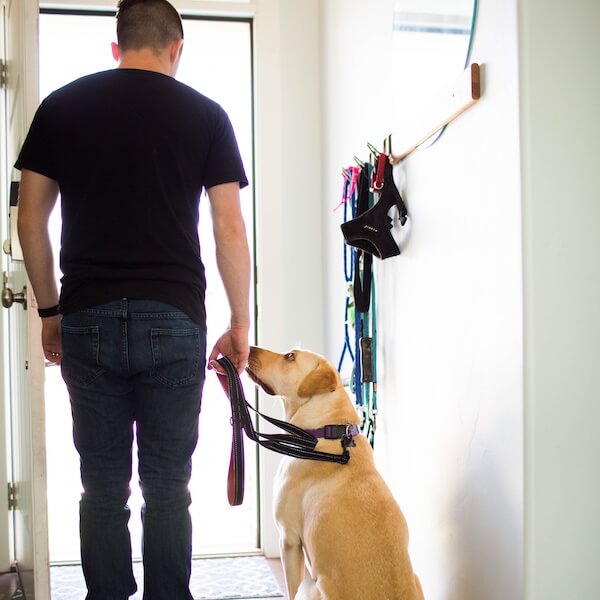
Your dog bursting through the door is not only unsafe, but it's unsettling as you try to leave for walks. Here's an impulse control training you can do with your dog every day as you leave home.
- Start with your pup on a leash
- Place an elevated platform near your door, an ottoman works great!
- Have your dog jump onto the platform and reward them for being up there.
- Practice this a few times.
- Open your door 1-2” and close it. Reward your dog for staying. If your dog jumps down, reset and try again
- Once they stay for that, increase the amount you open your door. Again, your dog should stay sitting, if they get up or jump off simply reset them, be patient, and try again
- Eventually, you should be able to have the door all the way open and your dog staying - this will take multiple sessions and that’s okay
- Next, give your dog a release word to tell your dog he or she can get up and go through the door with you, this could be ‘Okay!” Or 'Release.' whatever feels natural to you.
Once your dog has that down, you can do daily impulse checks as you leave home with your pup!
TEACH YOUR DOG TO WAIT TO BE RELEASED AFTER UNCLIPPING THE LEASH
Similar to above, trying to fight your dog's pulling and yanking as you're trying to unclip their leash is troublesome. It can lead to painful hand/finger injuries and generally sets the tone for a lack of control for whatever happens next.
Every time you are unclipping your dog off the leash, whether that's at the park, in the yard, when coming home from a walk, or wherever, have them wait to be released by a cue.
In the beginning stages of practicing this, you can unclip the leash while still holding your dog's collar or harness.
Then, give your dog a release cue (go, free, etc.) and let go of them.
By doing this on a consistent basis, your dog will start to understand that they aren't free to go until given a release cue. This can dramatically help with your dog's impulse control!
IMPULSE CONTROL GAMES FOR DOGS RECAP
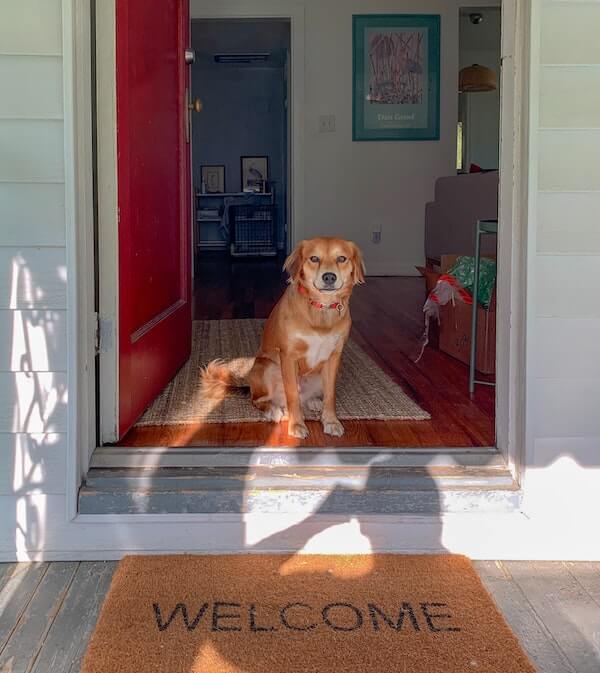
Impulse control is a vital skill that every dog must learn. These games, training, and exercises should be a part of your daily routine!
Looking for even more details about these games (like steps to increase the difficulty and video examples) or other impulse control games for your dog?
The Pupford Academy has an expert-led course for 21 Impulse Control Games. Each one helps keep your dog focused and engaged with you, working on specific instances where impulses can cause unwanted behaviors.
For example, the Proper Pup Meal Time game teaches your dog to wait patiently for their food, while the Open Door Policy game teaches your dog not to burst through doors.
Each impulse control game has step-by-step written and visual instructions, with multiple levels to help your dog master the behavior one step at a time.
Get access to all 21 Impulse Control Games here!
How have you best helped improve your dog's impulse control? Tell us in the comments!
🐶 Don't miss out, get access to 21 easy-to-play & effective impulse control games. Get access to 21 Impulse Control Games now!
0 Comments